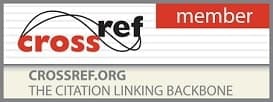- Printed Journal
- Indexed Journal
- Refereed Journal
- Peer Reviewed Journal
P-ISSN: 2394-1685 | E-ISSN: 2394-1693 | CODEN: IJPEJB
Impact Factor (RJIF): 5.38
2017, Vol. 4, Issue 5, Part C
Stress in the physical education students in the examination situation
Author(s): Tadeusz Leszek Jasiński
Abstract:
Introduction: Formal education is accompanied by the knowledge execution and progress in the education in each stage of teaching. Such activities are difficult situations, tightly closed with feeling of stress in the students. In view of the “transactional stress theoryâ€, stress situation such as examination may be a kind of challenge indicating an appraisal of the own abilities to control situation and to gain something. Stress feeling during examination may depend on its cognitive appraisal and earlier experiences connected with such a situation. Objectives: This study aimed at acquainting the knowledge of the stress feeling in the students during examination. Stress situation was the final examination of DEP (developmental and educational psychology) and psychological tests executed during this situation. It was assumed that the group of students filling these tests during DEP examination will work in time deficit and it may affect tests accuracy and intensify stress. Material and Methods: The study took place in April-June 2017. It included 28 students of the master course in the Physical Education Faculty at Physical Education Academy in GdaÅ„sk. The examined group included 14 female and 14 male students, aged between 22 years and 27 years. In this study three perception tests were used: Multiple Add-Substrate Test (MAS), Speed, Divisibility, Accuracy (SDA) test, and Visual Speed and Accuracy Test (VSA) designed by Grimsley et al. To assess the feeling of stress during examination, Stress Feeling Questionnaire (SFQ) of Plop and Makarowski was used. SFQ enables to calculate total result informing about the generalized stress level, and three results referring to the following dimensions: Emotional Tension (ET), External Stress (ES), and Intrapsychic stress (IS). FSQ test contains also Lie Scale (LS). Results: Results of MAS test showed the differences concerning the number of the arithmetical calculations made both in neutral and examination situations. During examination, an increased number made calculations was accompanied by an increase in the number of errors. Statistical analysis of the SDA test results showed significant difference in the number of the correct calculations made in neutral situation and during the examination. Analysis if the stent results of SFQ test obtained in both neutral situation and during examination revealed visible differences in its subscales. Answers to the SFQ test during examination increased emotional tension (ET), increased external stress (ES), and intrapsychic stress (IS) in the examined students. Significant differences were noted in the value of stents of the general SFQ test result, i.e. generalized stress feeling in the examined students in both neutral situation and during the examination. Conclusions: Students during the examination usually made lower number of the arithmetical calculations and perception tasks and made more errors. Difference in the number of errors in perception tests made by students in stress situation (examination) is statistically significant, which may indicate increased stress intensity. Statistically significant differences in the stress feeling exist in the physical education students between neutral and stress (examination) situations.
Pages: 148-154 | 1172 Views 109 Downloads
Download Full Article: Click Here
How to cite this article:
Tadeusz Leszek Jasiński. Stress in the physical education students in the examination situation. Int J Phys Educ Sports Health 2017;4(5):148-154.








 Research Journals
Research Journals